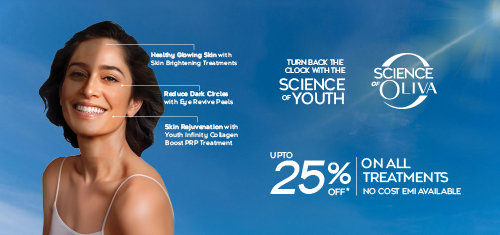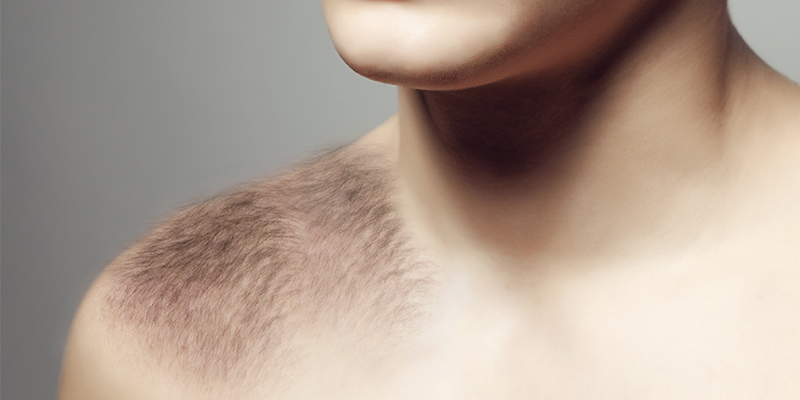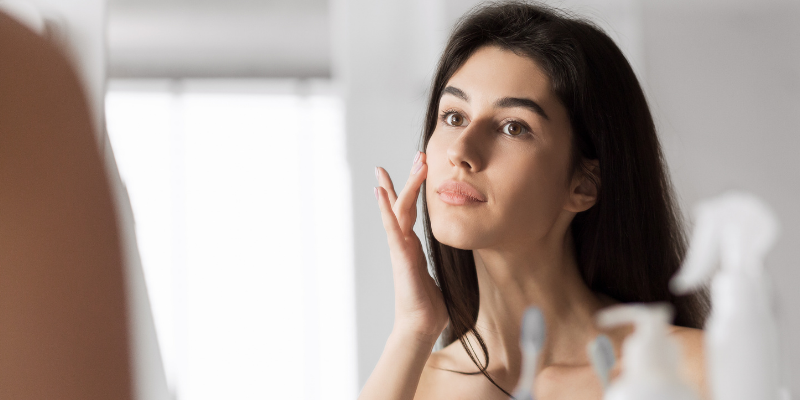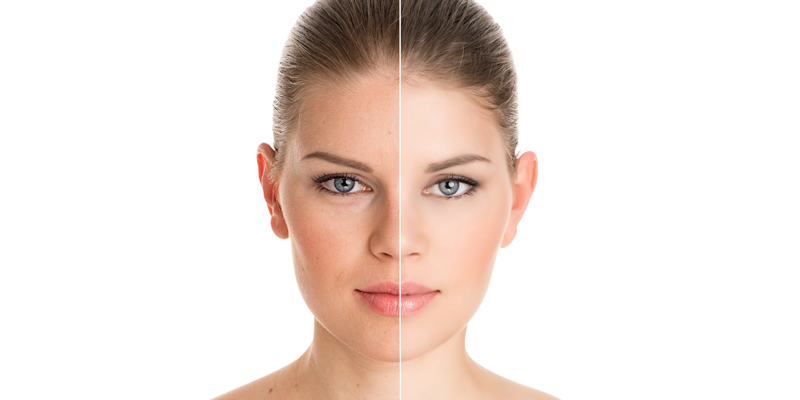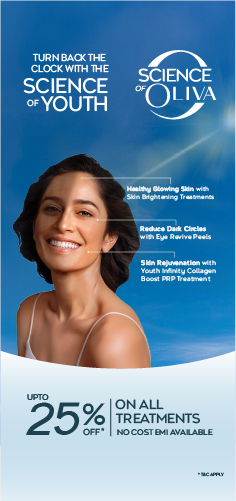In This Article
PRP Skin Treatment: Cost, Procedure, Benefits & Side Effects Explained
As we age, our skin starts to show signs of wrinkles, fine lines, and a loss of its youthful glow. If you’re looking for a safe, non-surgical way to refresh your skin, PRP treatment for the face might be the solution you need. This treatment uses your own platelet-rich plasma (PRP) to help boost collagen and improve your skin’s texture. PRP facials have become very popular because they offer a natural way to make your skin look younger without surgery. Keep reading to learn about the benefits, side effects, costs, and everything else you need to know about PRP skin treatment.
In This Article
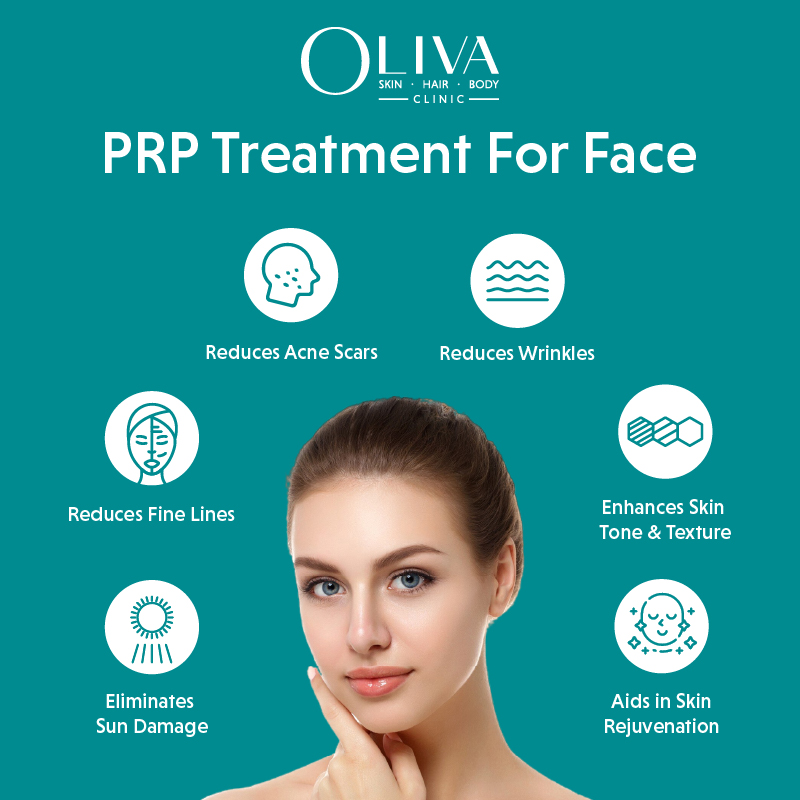
What Is PRP Skin Treatment?
PRP (Platelet-Rich Plasma) treatment is a non-surgical, natural therapy that uses your own blood to rejuvenate and enhance your skin. The procedure involves drawing a small amount of your blood, processing it to concentrate the platelets, and then injecting this platelet-rich plasma into targeted areas of your face or skin. The growth factors in the PRP help stimulate collagen production, improve skin texture, and promote tissue regeneration.
PRP treatment is popular for its ability to reduce fine lines, wrinkles, and acne scars while improving skin firmness and texture. Since it uses your body’s own cells, there is minimal risk of allergic reactions or side effects, making it a safe and effective option for skin rejuvenation. Whether you want to fight signs of aging or enhance your skin’s natural glow, PRP is a go-to choice for achieving youthful, radiant skin without the need for surgery.
How Does PRP Skin Treatment Work?
PRP skin treatment works by using concentrated platelets and natural growth factors from your own blood, which are injected into areas of your face showing signs of aging. This helps stimulate collagen production and tissue regeneration, visibly reducing wrinkles and improving skin texture.
As the sessions proceed, PRP gradually restores a youthful, radiant appearance by boosting skin elasticity and firmness. This non-surgical procedure provides long-lasting rejuvenation without using artificial ingredients. Here’s how PRP skin treatment works:
- Boosts Collagen Production: PRP helps stimulate collagen, which is essential for keeping your skin firm and smooth. This leads to improved skin texture, elasticity, and anti-aging effects.
- Promotes Cell Renewal: The growth factors in PRP help repair and renew skin cells, reducing fine lines, wrinkles, and scars.
- Improves Blood Flow: PRP enhances the flow of blood, oxygen, and nutrients to the treated areas, promoting overall skin rejuvenation.
Skin Conditions Treated With PRP Treatment
PRP skin treatment can effectively treat the following skin conditions:
- Acne Scars: It minimises the appearance of acne scars by inducing collagen production and skin healing.
- Fine Lines and Wrinkles: PRP reduces visible signs of ageing like fine lines and wrinkles, especially in the eye and mouth areas.
- Uneven Skin Tone And Texture: PRP improves the skin texture and tone and visibly enhances your appearance.
- Sun Damage: PRP treatment for the face can visibly reverse premature ageing caused by prolonged sun damage.
Who Can Opt for PRP Skin Treatment?
PRP treatment is ideal for those addressing aging, fine lines, wrinkles, acne scars, and uneven skin tone. It’s a safe, natural, and non-invasive option for skin rejuvenation without surgery risks. Suitable for most skin types, including sensitive skin, PRP uses your own blood. Consult a qualified dermatologist to determine if it’s the right choice for your skin.
Benefits Of PRP Skin Treatment
PRP skin treatment offers a wide range of skin benefits, making it a popular choice for those seeking natural skin rejuvenation. By stimulating collagen production, improving skin texture, and enhancing hydration, PRP helps to reduce fine lines, wrinkles, acne scars, sun damage, and more. Here’s a closer look at the key benefits:
-
Reduces Fine Lines and Wrinkles:
PRP boosts collagen and elastin production, helping to plump up the skin and smooth out fine lines and wrinkles.
-
Boosts Skin Elasticity:
Over time, PRP improves skin elasticity and firmness, giving your skin a more youthful and rejuvenated appearance.
-
Minimises Sun Damage:
The regenerative effects of PRP help reduce sunspots, hyperpigmentation, and uneven skin tone, giving you a clearer, more balanced complexion.
-
Reduces Skin Sagginess:
PRP treatment helps tighten skin, improving facial contours in areas like the cheeks, jawline, and under-eye region.
-
Decreases Acne Scars:
By promoting tissue repair, PRP helps fade acne scars, leaving you with smoother, more even skin.
-
Promotes Natural Skin Rejuvenation:
PRP accelerates the skin’s natural healing process, revitalizing dull or tired-looking skin for a healthier glow.
-
Enhances Skin Hydration:
PRP improves skin hydration by encouraging better moisture retention, making your skin look more supple and nourished.
-
Adds Luminosity to the Skin:
PRP improves blood circulation and cell turnover, giving your skin a radiant, youthful glow.
PRP Skin Treatment Procedure
Here is a detailed step-by-step procedure of Face PRP Treatment For Skin Rejuvenation:
-
Drawing Of Blood Sample:
A dermatologist will draw a small quantity of the patient’s blood from their arm, similar to a standard blood test.
-
Segregating The Platelet-Rich Plasma:
Next, the medical expert will use USFDA-approved centrifuge technology to segregate the platelet-rich plasma. This machine spins the blood sample rapidly to separate the red blood cells, white blood cells, plasma and platelets into distinct layers based on their density.
-
Activating The Growth Factors:
During this process, your doctor will activate the growth factors in the platelet-rich plasma that are essential for tissue repair and rejuvenation. Next, they will carefully extract the concentrated platelet-rich plasma (PRP) using a sterile syringe or pipette.
-
Administering The PRP Injections:
Your dermatologist will now prepare the collected PRP for immediate injection, ensuring it retains its bioactive properties for effective skin rejuvenation. They may administer PRP injections in facial areas with visible ageing signs, like fine lines, wrinkles and sagging.
A Word Of Caution:
Always consult a qualified dermatologist to ascertain if PRP treatment is suitable for your skin concerns and goals. This will help ensure you enjoy a safe treatment experience and achieve the best results.
PRP Skin Treatment After Care
After face PRP (platelet-rich plasma) treatment for skin rejuvenation, it is crucial to follow some precautionary measures for optimal healing and results. Here are the essential post-treatment care guidelines:
-
Avoid Direct Sun Exposure:
Avoid stepping out during the peak afternoon hours to prevent photo damage for at least two days after the procedure. Ensure you apply a broad-spectrum sunscreen with minimum SPF of 30 at least 20 minutes before going outside.
-
Skip Applying Makeup:
Avoid applying makeup to the treated area for at least a day or two to prevent skin irritation and infection.
-
Refrain From Intensive Physical Activity:
Avoid strenuous physical activities for at least the next two days to reduce the chances of swelling and bruising.
-
Stay Hydrated:
Drink plenty of water to support the healing process.
-
Avoid Touching the Treated Area:
Please do not touch or rub the treated area to prevent potential side effects.
-
Use Mild Skincare Products:
Avoid harsh chemical-based skincare products, especially exfoliants for a few days. Use only mild hypoallergenic skincare products that your dermatologist recommends as per your skin type.
-
Apply Cold Compress For Swelling:
Apply a cold compress to the treated area to help reduce alleviation and discomfort based on your dermatologist’s advice.
-
Avoid Other Cosmetic Treatments:
Do not undergo any other cosmetic treatments like facials, chemical peels, microdermabrasion on the treated area for at least two weeks.
-
Follow Post-Treatment Instructions:
Follow your doctor’s prescription for medication to ensure proper healing and optimal results.
PRP Skin Treatment Side Effects
Here is a list of the minor side effects of PRP Skin Treatment:
-
Minor Bruising:
You may notice temporary bruising at the injection sites, which will resolve within a few days.
-
Redness and Swelling:
You can expect some transient redness and swelling right after the treatment. Do not worry, as this is normal and will subside within a few hours.
-
Tingling or Tightness:
Some people may experience a slight tingling or tightness in the treated area.
-
Skin Sensitivity:
Your skin may be more sensitive to radiation, so avoid direct sun exposure and use mild skincare products.
NOTE:
It is crucial to undergo PRP skin treatment performed by a qualified and well-experienced dermatologist to minimise the side effects. Improper PRP treatment can lead to severe health complications that include infections, permanent scarring, nerve damage, prolonged swelling and bruising.
Expected Results After PRP Skin Treatment
PRP skin treatment results include an initial glow and improved skin texture within the first few weeks. You can expect fine lines and wrinkles to reduce and improve skin elasticity, giving you a more youthful appearance within three months after treatment. Results can last up to a year, with minimal follow-up treatments recommended for sustained benefits. Check out these before and after images to appreciate the visible results of PRP face treatment
What Is The PRP Skin Treatment Cost In India?
The cost of PRP skin treatment generally ranges from ₹5,000 to ₹12,000 per session, depending on factors like the clinic’s location, the experience of the dermatologist, and the type of skin concerns being treated. Many clinics also offer package deals for multiple sessions, which typically cost between ₹20,000 and ₹35,000 for 3-4 sessions. The final price may vary based on the number of sessions needed to achieve your desired results.
DISCLAIMER:
Please note that the prices mentioned are indicative and may vary depending on the specific treatment, choice of technology, and underlying skin or hair conditions. Prices are also subject to change based on ongoing promotions or offers at the clinic. For an accurate estimate, please consult with our dermatologist.
Frequently Asked Questions On PRP Skin Treatment
The key difference between PRP and mesotherapy is that PRP uses your blood’s platelets, while mesotherapy uses a customised cocktail of nutrients and medications. PRP focuses on skin rejuvenation by utilising your body’s natural growth factors, whereas mesotherapy delivers targeted nutrients directly to the skin for a variety of concerns. Both treatments can enhance your skin’s appearance, but the choice depends on your specific needs and desired outcomes. Consulting with a dermatologist can help determine the best option for you.
The key difference between PRP and laser treatments for the face lies in their methods and focus. PRP uses your platelets to stimulate collagen production and rejuvenate the skin by injecting natural growth factors. Laser treatments, on the other hand, use focused light energy to create micro-injuries and induce collagen production. While PRP focuses on healing and rejuvenation from within, lasers target specific skin issues like wrinkles, scars, and pigmentation from the surface.
Dermatologists consider laser treatments as the best option for providing immediate results. They can precisely address various skin concerns with minimal downtime. Both treatments can improve skin appearance, but consulting with a dermatologist can help determine the best option based on your specific needs and desired results.
Yes, a PRP facial is very safe. Since PRP uses your own blood, there’s virtually no risk of allergic reactions or infections. It’s a minimally invasive procedure with very few side effects, making it a safe option for most people. Always consult with a qualified dermatologist to ensure it’s right for you.
Typically, 3-4 PRP treatments spaced about 4-6 weeks apart are recommended for optimal results. While you may see improvement after one session, multiple treatments help enhance collagen production and improve skin texture over time. Maintenance sessions are usually recommended every 6-12 months.
The face PRP treatment results last between 8 and 12 months. Minimal maintenance sessions scheduled every 6 to 12 months can help sustain the results.
You may start to see improvements in your facial skin within a few weeks after the first session, while you can expect optimal results after 3 to 6 months.
Yes, PRP skin treatment is effective for improving skin texture, tone, and overall appearance. It can reduce fine lines and wrinkles and improve skin elasticity by stimulating collagen production.
PRP treatment is generally not painful, though you may feel some mild discomfort during the injections. Most people experience minimal pain, as a topical numbing cream is applied before the procedure.
Yes, PRP is excellent for the face. It helps rejuvenate the skin, reduce wrinkles, and improve overall skin texture.
You should wait for at least 24 hours after a PRP treatment. Use a gentle cleanser and avoid harsh products for the first few days.
Yes, you can combine PRP with other treatments like micro-needling, laser therapy, and hyaluronic acid fillers for enhanced results. Always consult with your dermatologist to create a personalised treatment plan.
PRP doesn’t directly whiten skin, but it helps brighten the complexion and even out skin tone.
After PRP treatment, your face may appear slightly red and swollen, similar to a mild sunburn, but this typically subsides within a few hours to a day.
Skin typically does not peel after PRP treatment. Unlike some other treatments, PRP works by promoting healing and rejuvenation from within, rather than by removing skin layers. You may experience slight flaking or dryness, but peeling is not a common side effect.
Our certified subject matter experts do extensive research and collate facts from reputed scientific journals and international studies to create informative and engaging articles related to all your dermatology concerns. They strive to help you decipher medical jargon, distinguish fact from fiction and overcome paranoia. Our qualified medical board or expert panel goes a step further to verify these facts based on their rich academic knowledge, vast clinical experience and critical industry insights to ensure you consume only medically accurate content that empowers you to make informed decisions about your hair and skin-care treatments and weight management. Check out our Editorial policy for further details
https://www.aad.org/public/cosmetic/younger-looking/platelet-rich-plasma-secret-to-younger-skin
https://www.ncbi.nlm.nih.gov/pmc/articles/PMC8182581/

